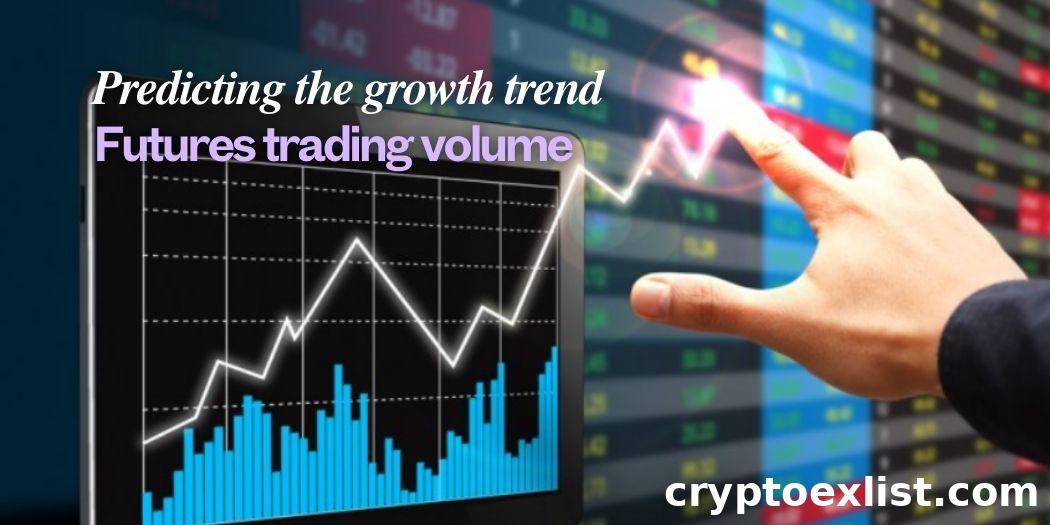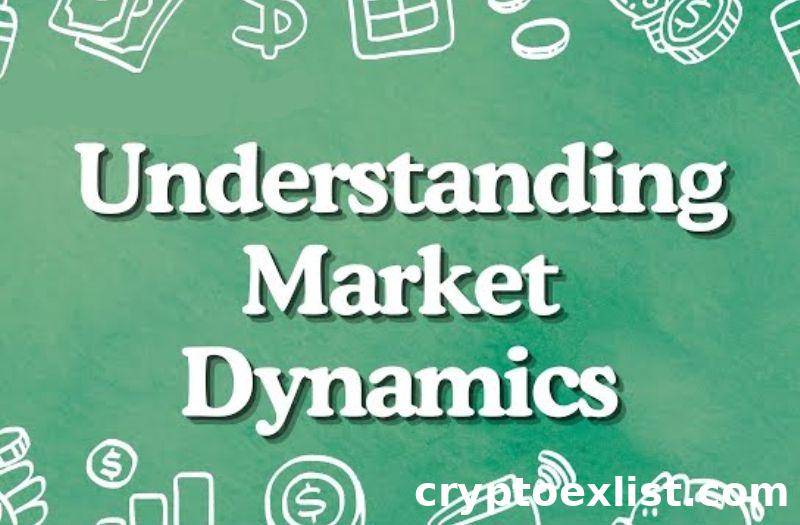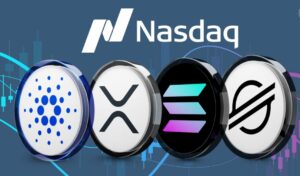
The futures trading market has seen significant growth and transformation in recent years, especially with the rise of digital assets like cryptocurrencies. Platforms such as Binance have made it easier than ever for traders to participate in these markets, leveraging advanced technologies and global access. For newcomers, understanding the fundamentals of futures trading, market dynamics, and evolving strategies is key to thriving in this fast-paced environment. This guide dives into the current trends in futures trading, offering insights on the latest strategies, technological advancements, and regulatory changes shaping the future of the market.

Introduction to Futures Trading
What is Futures Trading?
Futures trading involves buying and selling contracts that obligate the trader to purchase or sell an asset at a predetermined price at a future date. These contracts allow traders to speculate on the future price movements of assets without needing to own them directly. On platforms like Binance, traders can use cryptocurrency futures to profit from both rising and falling markets by taking either long (buy) or short (sell) positions. For beginners, futures trading offers flexibility and potential for high returns but requires a solid understanding of market dynamics due to the risks associated with leverage and market volatility.
The Evolution of Futures Markets
The futures market has come a long way since its inception, evolving from simple contracts for agricultural commodities to a complex financial system that includes a wide range of assets such as stocks, bonds, and cryptocurrencies. Futures trading dates back to the mid-19th century, with the establishment of the Chicago Board of Trade (CBOT), which standardized contracts for commodities like wheat and corn. Over time, futures contracts expanded to cover financial instruments and eventually digital assets like Bitcoin and Ethereum. Today, platforms like Binance make it easy for everyday traders to access this once-exclusive market, offering advanced trading tools, deep liquidity, and diverse contract types for cryptocurrency futures. The evolution of futures trading highlights its growing importance in global finance, especially as digital assets become more mainstream.
Understanding Market Dynamics
Supply and Demand Factors
In futures trading, just like in any other market, the principle of supply and demand plays a crucial role in determining asset prices. When demand for an asset, such as Bitcoin or Ethereum, rises while the supply remains limited, prices tend to increase. Conversely, when supply exceeds demand, prices often fall. On Binance, cryptocurrency futures prices can be highly influenced by events such as network upgrades, regulatory news, or major investment announcements. For newcomers, understanding how supply and demand dynamics affect the market can help in predicting price movements and making informed trading decisions. Monitoring supply changes, such as token burns or mining rewards halving, can provide valuable insight into future price trends.
Economic Indicators Influencing Futures Prices
Economic indicators are key factors that impact futures prices, particularly in the cryptocurrency market. Indicators such as interest rates, inflation, and GDP growth can directly or indirectly affect the value of digital assets. For instance, when central banks raise interest rates, investors may shift their focus away from high-risk assets like cryptocurrencies, leading to price declines in futures contracts. On Binance, traders can track global economic trends and factor them into their strategies to stay ahead of market changes. Furthermore, cryptocurrency-specific indicators such as network activity, hash rates, and on-chain metrics are crucial in shaping futures prices, providing traders with essential data to make better predictions and manage their trades effectively.

Technological Advancements in Futures Trading
Algorithmic Trading and Its Impact
Algorithmic trading has revolutionized the way futures trading is conducted, especially in fast-paced markets like cryptocurrency. This form of trading uses automated programs to execute trades based on predefined criteria, eliminating the need for manual intervention. On platforms like Binance, algorithmic trading allows traders to capitalize on market opportunities 24/7, responding to price changes in real-time. For beginners, the ability to automate trades can reduce the impact of emotional decision-making and help maintain consistent strategies. Algorithmic trading has also improved liquidity in the market, making it easier to enter and exit positions quickly, which is especially important in volatile markets like cryptocurrency futures.
The Role of Artificial Intelligence
Artificial intelligence (AI) is playing an increasingly important role in futures trading, particularly in enhancing predictive analytics and optimizing trading strategies. AI can analyze vast amounts of market data, spot trends, and forecast price movements more accurately than traditional methods. On platforms like Binance, AI-driven tools can assist traders by providing real-time insights into market sentiment, technical indicators, and trading patterns. For new traders, AI simplifies the decision-making process by offering data-backed recommendations, helping them make more informed trades. As AI technology continues to evolve, its role in futures trading will likely expand, offering traders more sophisticated tools to stay competitive in the market.
Globalization and Its Effects on Futures Markets
Cross-Border Trading Opportunities
Globalization has greatly expanded the scope of futures trading, offering traders from all over the world access to different markets, including cryptocurrencies, commodities, and financial instruments. Platforms like Binance make it easy for traders, regardless of their geographical location, to engage in futures trading and take advantage of global price movements. This has led to an influx of cross-border trading opportunities, as traders can now speculate on the price of assets in other countries or markets without physically being there. For beginners, this means more opportunities to diversify their portfolios and trade assets that were once inaccessible. Binance’s global presence enables traders to seamlessly enter futures markets around the clock, providing them with a truly international trading experience.
Geopolitical Events and Market Volatility
Global events such as geopolitical tensions, regulatory changes, and economic crises can have significant effects on the futures markets, particularly in terms of volatility. For example, geopolitical events like trade wars, elections, or policy changes can lead to sharp price fluctuations in assets like crude oil, gold, or even cryptocurrencies. Binance Futures traders need to be aware of these external factors, as they often lead to increased market volatility and price swings, creating both opportunities and risks. By staying updated on global news and understanding how it impacts the futures market, traders can adjust their strategies accordingly, positioning themselves to either capitalize on or hedge against market volatility. For newcomers, recognizing the link between geopolitics and futures prices is crucial for developing a successful long-term trading strategy.
Regulatory Changes and Compliance
Overview of Recent Regulations
The cryptocurrency market, including Binance spot trading, is subject to evolving regulations across different regions as governments seek to establish clearer frameworks for trading and digital assets. Recent regulatory changes aim to improve transparency, prevent fraud, and protect investors. For instance, major economies like the United States, the European Union, and China have introduced stricter Know Your Customer (KYC) and Anti-Money Laundering (AML) requirements for cryptocurrency exchanges, including Binance. These changes are designed to ensure that traders are verified, reducing the risk of illicit activities such as money laundering and terrorist financing. For new users, this means a more secure trading environment, but it also requires compliance with identity verification procedures before starting to trade on Binance.
Impact on Trading Strategies
These regulatory changes have a direct impact on how traders approach their trading strategies. With stricter compliance requirements, traders must ensure that their activities are in line with the platform’s rules, such as completing KYC processes and adhering to tax obligations based on their region. Furthermore, changes in leverage restrictions, particularly for retail traders, can affect how they use margin in their trades, leading to more conservative strategies. For example, Binance has adjusted its margin trading limits in certain jurisdictions to comply with local regulations, making it crucial for traders to stay informed about changes in leverage and position size. For beginners, understanding the regulatory landscape helps in building a compliant and sustainable trading strategy, while also ensuring that they are prepared for any future regulatory updates that may impact their trading activities.

Current Trends in Futures Trading Strategies
Trend Following vs. Mean Reversion
In the world of futures trading, two popular strategies are trend following and mean reversion. Trend following is a strategy where traders attempt to capitalize on the momentum of an asset’s price movement, entering trades when a clear upward or downward trend is identified. This strategy works well in highly volatile markets, such as cryptocurrency futures on Binance, where significant price swings can occur over a short period. Traders using trend-following strategies often rely on technical indicators like Moving Averages and Relative Strength Index (RSI) to identify trends and optimize entry and exit points.
On the other hand, mean reversion assumes that an asset’s price will eventually return to its average or mean value after deviating significantly. Traders using this strategy aim to buy low and sell high, capitalizing on price corrections. In Binance’s Futures trading, mean reversion strategies can be particularly useful when the market experiences temporary overreactions or extreme price movements. Both strategies offer unique opportunities, but beginners need to understand market conditions and choose the approach that best fits their risk tolerance and trading goals.
Swing Trading in Futures Markets
Swing trading is another popular approach in futures markets, especially for those who want to capitalize on medium-term price movements without being glued to their screens all day. In Binance Futures, swing traders typically hold positions for several days or even weeks, aiming to profit from the “swings” in asset prices. This strategy is particularly effective in markets like cryptocurrency, where price volatility can offer frequent opportunities for profitable trades.
Swing traders often combine both fundamental analysis and technical analysis to make informed decisions. They monitor market trends, chart patterns, and key indicators like Bollinger Bands and MACD (Moving Average Convergence Divergence) to predict potential price movements. For beginners, swing trading offers a balanced approach, allowing them to participate in futures markets without the pressure of day trading, while still taking advantage of price fluctuations over time. However, managing risk and setting clear entry and exit points are essential to succeed with this strategy on Binance.
Transaction Volume Growth
The transaction volume growth in futures trading has surged significantly over the past few years, particularly in the cryptocurrency space. On platforms like Binance, the introduction of cryptocurrency futures contracts has led to a massive increase in trading volumes, driven by both retail and institutional investors. As traders look for ways to maximize profits in volatile markets, futures trading offers the opportunity to capitalize on short-term price fluctuations. The growth in transaction volume also reflects the increasing confidence in the cryptocurrency market, as more traders enter the market to speculate on assets like Bitcoin and Ethereum. For newcomers, this growing volume provides better liquidity, which means faster execution of trades and tighter spreads, ultimately leading to a more efficient trading experience on Binance.
The Development of Electronic Transactions
The rise of electronic transactions has transformed futures trading into a seamless, real-time experience accessible to anyone with an internet connection. Platforms like Binance have played a key role in this shift, allowing traders to access futures markets with just a few clicks. With the development of advanced trading platforms, tools such as algorithmic trading, charting software, and mobile apps make it easier than ever for traders to monitor and execute trades from anywhere. Electronic trading has not only increased market accessibility but also improved transparency and efficiency, with trades being executed almost instantly. For beginners, this means fewer barriers to entry and the ability to participate in the same markets as professional traders, thanks to the development of these user-friendly platforms.
Impact of the Pandemic on the Futures Market
The COVID-19 pandemic had a profound impact on global financial markets, including the futures market. Initially, the pandemic caused sharp volatility as investors reacted to uncertainty and market disruptions. However, platforms like Binance Futures saw a spike in trading activity as more people turned to digital assets for trading opportunities during the lockdowns. The pandemic accelerated the adoption of cryptocurrency trading, with many investors viewing digital currencies as a hedge against traditional market instability. This shift led to increased demand for futures contracts, as traders sought ways to profit from the heightened volatility in cryptocurrency markets. While the pandemic posed challenges, it also brought significant growth and innovation to the futures trading landscape, reinforcing the importance of flexibility and adaptability in trading strategies.
Conclusion
As futures trading continues to evolve, staying informed about market trends, regulatory shifts, and technological innovations is essential for both novice and experienced traders. Platforms like Binance provide a user-friendly environment to explore futures markets, offering tools for analyzing trends, using advanced strategies, and leveraging new technologies like algorithmic trading and artificial intelligence. Whether you’re interested in cross-border trading opportunities or navigating the impact of global events on market volatility, keeping up with these developments will position you for success. As the landscape of futures trading grows, the ability to adapt and stay ahead of trends will remain a crucial factor in achieving long-term trading success.























